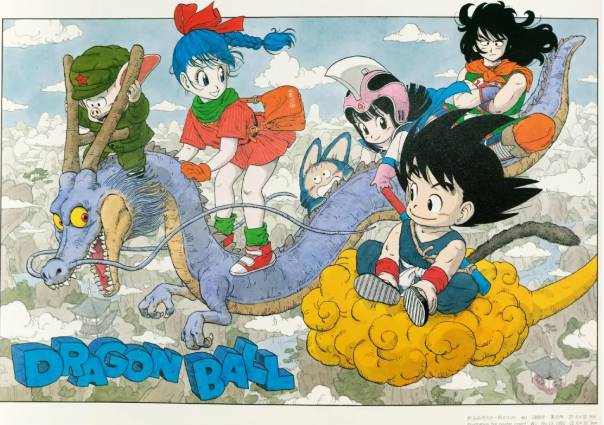In a recent episode of the podcast “Nihon KosoKoso,” Katsuyoshi Nakatsuru, one of the prominent animators behind the iconic “Dragon Ball”, revealed a significant setback during the early production of the series.
It is said that Dragon Ball was almost canceled in its initial years of publication in Weekly Shonen Jump during the early 1980s.
Nakatsuru began working on this anime in 1986, at which point the story was still gaining popularity with the Emperor Pilaf Saga. Viewers were becoming increasingly disinterested, to the extent that they were losing focus on the colored pages specifically dedicated to the animated series. The pivotal moment came when it was decided to quickly wrap up the storyline between Goku and Pilaf, allowing for a faster transition into the training arc with Master Roshi and the martial arts tournament.
According to Nakatsuru: “I remember starting to work on Dragon Ball from Chapter 4, focusing on the scene where Goku is attacked by an old man because he thought Goku was a monster, just before Oolong arrives in the village. Torishima also mentioned that at that time, the manga still had some colored pages, but viewer numbers were declining. The colored segments in particular ended with Chapter 4, and from there, the decline began. To avoid further issues, we had to quickly gather the Dragon Ball and introduce early the training process of Goku and the martial arts tournament.”

This information is not entirely new as Toriyama has previously discussed in interviews about how “Dragon Ball” initially struggled to succeed.
In “Dragon Ball Daizenshuu 2: Story Guide,” Toriyama noted that Torishima, his editor, told him that Goku was not appealing enough to audiences due to his overly simplistic design. This led to Goku also needing to change, shifting focus more on the desire to become stronger, fundamentally altering the direction of the story.
Torishima himself, who also participated in the interview, recalled that “Dragon Ball” was originally a journey inspired by “Journey to the West,” but it didn’t gain much traction. The idea was to create a clear goal for Goku: to become stronger. As we know, this goal became the key that helped “Dragon Ball” achieve success to this day.





















